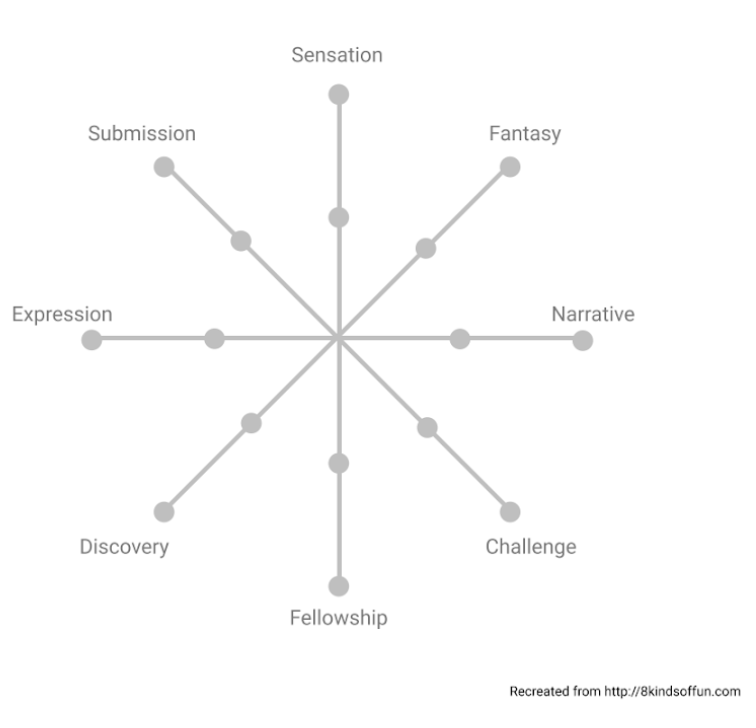I came into this class totally green about game design. I casually enjoyed playing games, but by no stretch of the imagination consider myself a gamer. As an LDT master’s student, I started with an interest in learning what makes games fun with the intent of leveraging those elements to improve learning experiences. I wondered if my master’s project could incorporate a game somehow. Ultimately, I ended up co-designing two games including an interactive fiction game — a genre also completely new to me.
Through this course, I learned about the 8 types of fun, as well as how game mechanics, dynamics, and aesthetics can come together to create an engaging experience. To be honest, I’m still learning how to apply these concepts, but I suspect that people spend much more than 10 weeks developing their game design intuition. The difference between mechanics (e.g., rules) and dynamic (e.g., behavior that arises from the mechanics/rules being used by players) is especially difficult for me to place a finger on. The aesthetic design choices of games, however, has become much more accessible to me. It is fun to design for an emotional journey.

As a UX Researcher, I enjoyed learning about playtesting and how it is both similar and different to conducting observations and interviews to understand and improve experiences. For example, I was able to moderate sessions in a fairly unstructured way, allowing players to engage with the game as if I were not in the room. After their playtest, I was able to ask questions that would help me understand where the experience was delightful and where it broke down. I’m used to synthesizing insights across many participants, but playtesting was much more flexible. We were able to iterate on ideas much more quickly that way.
Lastly, I learned how to critically play games. This took me about two thirds of the class to learn this skill, as it did not come naturally to me. I appreciated having frameworks to leverage like the 8 types of fun, formal elements, MDA, as well as the instructors’ feedback and guidance. I also realized that one of the reasons I found it difficult to analyze games was because I was also simultaneously learning them for the first time. As such, it was tempting to fall into the trap of evaluating the game on first time usability or learnability issues, and not necessarily on the mechanics which don’t necessarily become obvious until one becomes more familiar with a game.
I certainly don’t see games the same way as I did when I started the course. I don’t know if I will keep working on developing games, but I certainly will continue to critically play them. I already find myself asking, what makes this fun? How do the designers achieve the emotion that’s arising in me as I play? What would I change and why? What’s the most important element of the game? What would change about the game if it weren’t there? I’m confident that through more exposure to different types of games and by applying the skills and knowledge I gained through this course, I will in time develop a stronger sense of gamer’s intuition and hopefully, figure out ways to apply these concepts to my learning projects!


